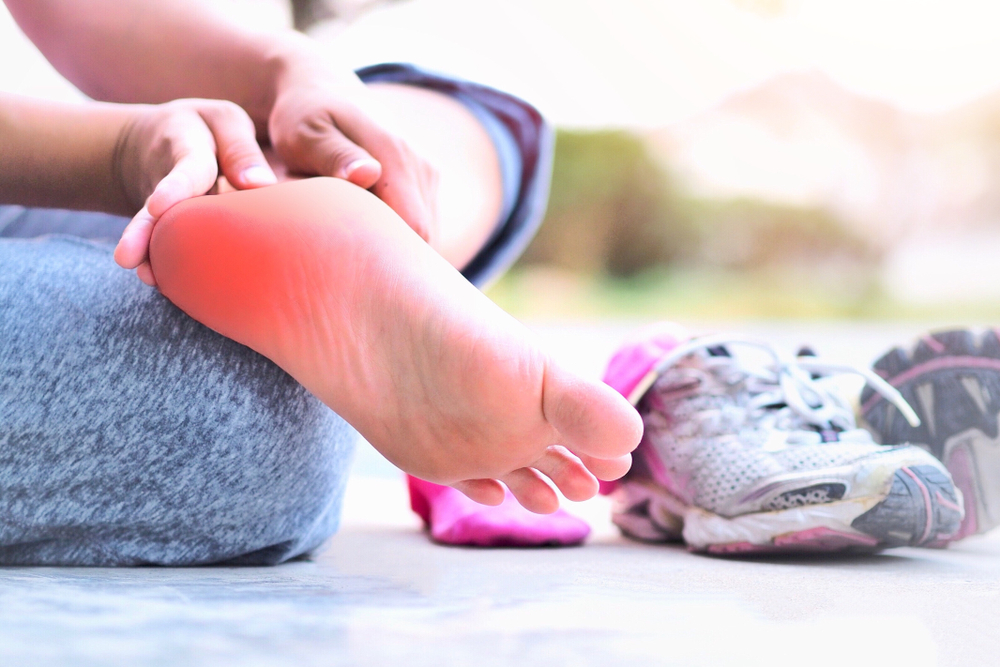
Staying Active with Plantar Fasciitis and Low Impact Exercise Options
If you have plantar fasciitis, you probably have the desire to remain off of your feet as much as possible, but total inactivity is not a good idea. This painful condition occurs when the plantar fascia, a thick band of tissue stretching from your heel to your toes, becomes inflamed. Most sufferers will experience stabbing pain in the heels, especially right after waking up.
Plantar fasciitis is common among runners and fitness enthusiasts, so it is often challenging for these patients to stay off their feet. The good news is that there are many ways to get in a good workout without aggravating their plantar fasciitis condition.
How Does Plantar Fasciitis Arise?
The plantar fascia is a ligament in your feet that connects your heel to your toes. This is the tissue that helps maintain the arch in your feet and acts as a shock absorber when you walk. However, excessive pressure like constant running, jumping or high body weight can cause the plantar fascia to tear. These minute tears can cause the ligament to inflame or degenerate, incrementally causing pain in the heel or the mid-foot area.
In most cases, plantar fasciitis affects only one foot, but it may develop in both feet. The pain usually originates as a minor discomfort but may grow into severe pain that is dull, sharp or burning. Most people feel symptoms most sharply in the mornings after a night in which the plantar fascia has contracted. Others may experience severe pain after a long period of sitting or when climbing stairs.
There are risk factors for developing plantar fasciitis:
- Aged 40 to 70 years old
- Women have a slightly higher risk than men
- Pregnant women, especially in the later stages
- Overweight
- Habitual runner
- Stays on feet for long periods
- Very high arched feet
- Flat feet
- Wears shoes with poor arch support
Treatments for Plantar Fasciitis
In most cases, self-care for plantar fasciitis is sufficient to mitigate the pain. These may include
- Over-the-counter pain relievers—commonly available drugs like ibuprofen, acetaminophen or aspirin are known as non-steroidal anti-inflammatory drugs or NSAIDs and may reduce inflammation and pain associated with plantar fasciitis. Always follow your doctor’s directions, even with OTC medications.
- Rest—if the cause of your plantar fasciitis is too much exercise or time on your feet, taking some time to be inactive should help heal your feet. Follow your doctor’s advice, however, as too much rest can also be harmful to your condition.
- Icing—you may apply an ice pack or soak your feet in an ice bath for 15 to 20 minutes at a time. This should help numb the pain and reduce swelling.
- Stretching—if you keep your calves and Achilles tendon stronger and more flexible, you should reduce the strain on your plantar fascia.
- Athletic tape—taping your feet can help stabilize it and put less stress on your plantar fascia which will help it heal more quickly.
- Orthotics—insoles or arch supports can provide more cushion for your feet and lessen pain symptoms. You can obtain generic supports or go to a foot specialist for customized orthotics and shoes.
- Night splints—normally, you sleep with your feet pointed down which allows your plantar fascia to contract, but this leads to more damage when you start walking. Night splints keep your plantar fascia extended throughout the night, limiting the opportunity to tear them.
There are also more aggressive therapies if your plantar fasciitis fails to respond.
- Steroid injection—if your pain persists, then your doctor may recommend an injection of corticosteroid which should reduce inflammation. This treatment should be effective for about a month.
- Physical therapy—many patients respond positively to physical therapy. The physical therapist will work with you to strengthen and stretch your plantar fascia, Achilles tendon and lower leg muscles.
- Surgery—as a last resort, you may get a procedure to remove the plantar fascia from the heel.
Exercising with Plantar Fasciitis
Because plantar fasciitis is often a feature of an active lifestyle, many sufferers are eager to find a form of exercise that will allow them to remain fit without aggravating their health condition. Here are some common forms of exercise that can satisfy both needs:
- Yoga—this form of exercise is excellent for plantar fasciitis patients because it avoids high-impact movements and emphasizes stretching and strengthening. Furthermore, yoga is very effective at burning calories. If you find that one yoga exercise is aggravating your plantar fasciitis, just substitute in another.
- Stationary bikes—you can avoid the normal pounding on your feet that comes with typical cardio exercises by riding a stationary bike with a hard-soled shoe. You can enjoy an aerobic workout with minimal strain on your feet.
- Swimming—swimming is an excellent full-body workout that will be easy on your feet. You can further minimize the strain on your feet by equipping fins to help propel you.
- Rowing—whether you actually row on a lake or river, or on a machine in the gym, rowing is an outstanding way to fully engage your body. Because you are using almost your entire body, you burn calories quickly, and rowing puts almost no stress on your feet.
- Upper body ergometer—an obvious way to avoid straining your plantar fascia is to not use your lower body while exercising. An upper body ergometer provides a vigorous workout for your arms and chest without involving your legs at all.
- Elliptical—by keeping your feet in a stationary position on an elliptical, you can avoid the majority of pounding stress that comes from running. Some plantar fasciitis patients with especially sensitive feet may require days off between sessions to avoid pain.
- Strength training—although building muscle may not burn as many calories as a cardio workout, it can be very useful to many plantar fasciitis patients. Bulking up can help your conditioning in the long run, limit strain on your feet and help strengthen key muscles like your calves.
Article written by: Dr. Robert Moghim – CEO/Founder Colorado Pain Care
M.D. Disclaimer: The views expressed in this article are the personal views of Robert Moghim, M.D. and do not necessarily represent and are not intended to represent the views of the company or its employees. The information contained in this article does not constitute medical advice, nor does reading or accessing this information create a patient-provider relationship. Comments that you post will be shared with all visitors to this page. The comment feature is not governed by HIPAA and you should not post any of your private health information.



